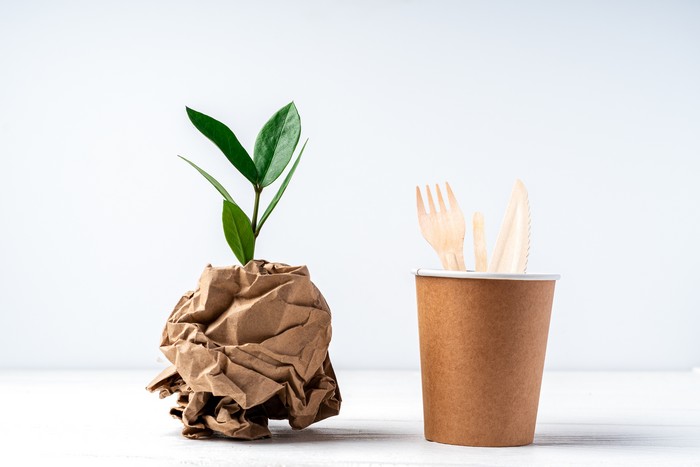Breaking down matters

As more people strive to live eco-friendly lives, understanding how to properly dispose of compostable packaging has become increasingly important. Scion is lending a hand with research to optimise composting conditions in industrial facilities, paving the way for a future where less contaminated food packaging ends up in landfill.
Single-use compostable food packaging, contrary to public understanding, is not widely composted in New Zealand. Food waste going to landfill, often found in combination with the packaging, is a bigger problem due to the production of methane as waste breaks down.
As eco-consciousness increasingly influences consumer behaviour, there is a need to introduce compostable packaging that is truly biodegradable and improve understanding about how to dispose of and compost such materials. Achieving this ensures New Zealand will be better placed to meet its sustainability goals.
To shed light on the performance of compostable products in industrial composting facilities, Scion conducted a series of trials of certified compostable products across several industrial composting sites in New Zealand. Evaluating disintegration of compostable, single-use products in a real-world composting setting, Scion compared these with the composting standards they are tested against in the laboratory setting. The research only focused on the compostability of the material and did not test for any harmful chemicals often associated with compostable packaging.
The research revealed key degradation variability across and even within sites. While all the materials were technically compostable, the conditions at each facility significantly impacted their disintegration rates. Factors such as temperature, mixing protocol, and shredding timings played a role, with moisture content emerging as a critical element.
Scion’s team leader of Sustainable Materials, Kate Parker, shared some of the team’s findings.
“Optimal moisture content of the compost pile during composting is key. Too dry and nothing biodegrades. Too wet and the whole pile becomes anaerobic.
We need to be careful about making sure the right materials go into the right bins. - Kate Parker
“Interestingly, our analysis revealed that fibre-based packaging didn’t degrade to the same degree as the plastic-based packaging. Likely due to their thinness and lack of additional moisture barrier coatings, biodegradable plastic materials generally disintegrated faster than fibre-based packaging,” Parker says.
The findings highlight concerns among New Zealand composters, as laboratory tests don’t always accurately replicate real-world composting environments. Although industrial composting facilities offer a potential solution, contamination with nonbiodegradable materials remains an ongoing issue.
Parker emphasises: “We need to be careful about making sure the right materials go into the right bins.
“With this research, Scion hopes to enable more composting of packaging materials, but only when it is appropriate, such as when it is contaminated with food. It is the food residues that provides nutrients for the composting process, not the packaging.”
Ministry for the Environment’s director Waste Investments Michelle Kazor says the research generated valuable insights.
“There’s an increasing number of packaging items on the market that producers claim are ‘compostable’. Scion’s research is an important step in helping product manufacturers, retailers and consumers understand what they’re buying, and how accurate these claims are.”
As the only certified compost testing facility in Australasia, Scion continues to explore the complexities of compostable packaging, aiming to contribute to a more sustainable future.
The study was funded by the Ministry for the Environment’s Te Pūtea Whakamauru Para Waste Minimisation Fund. The WMF is focused on accelerating New Zealand’s transition towards a low emissions and low waste circular economy.
